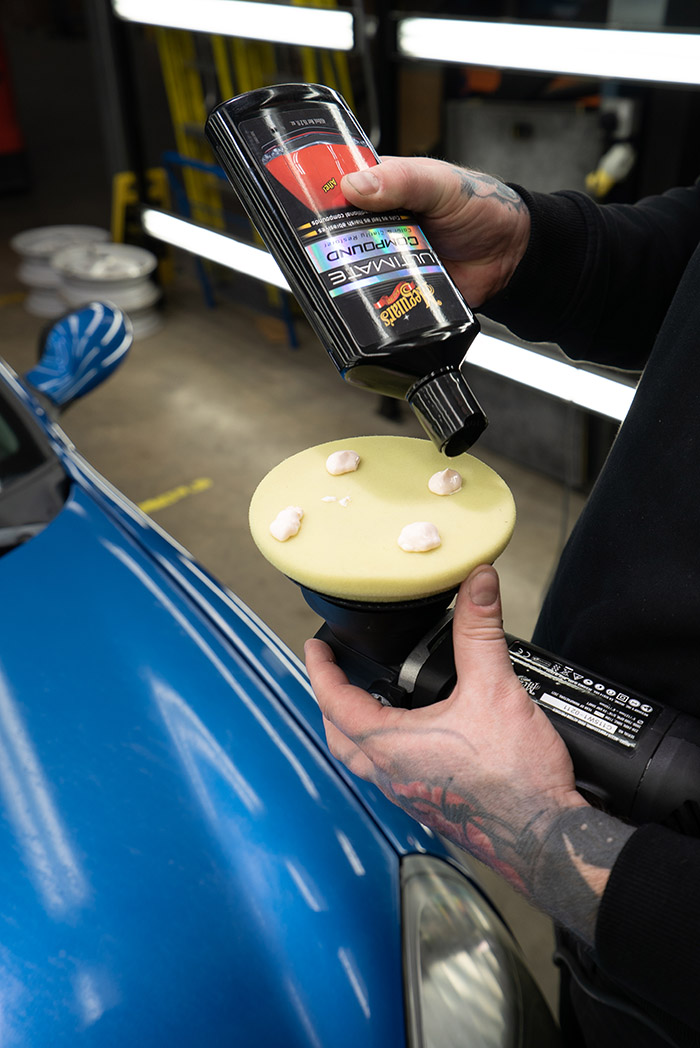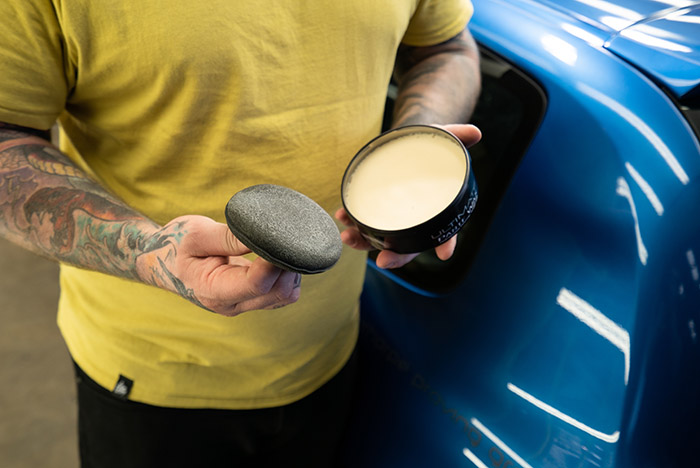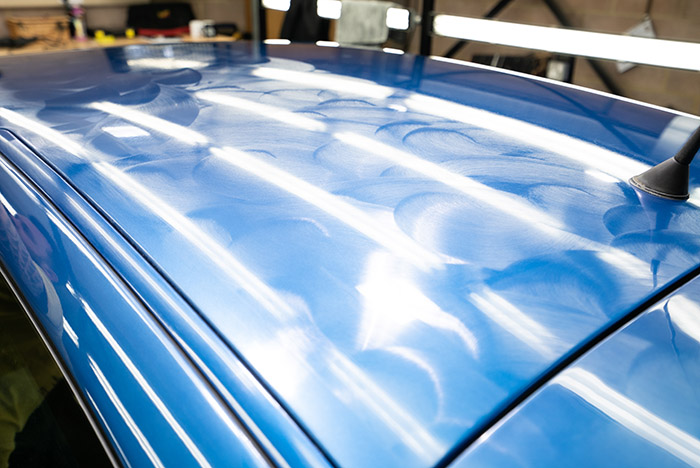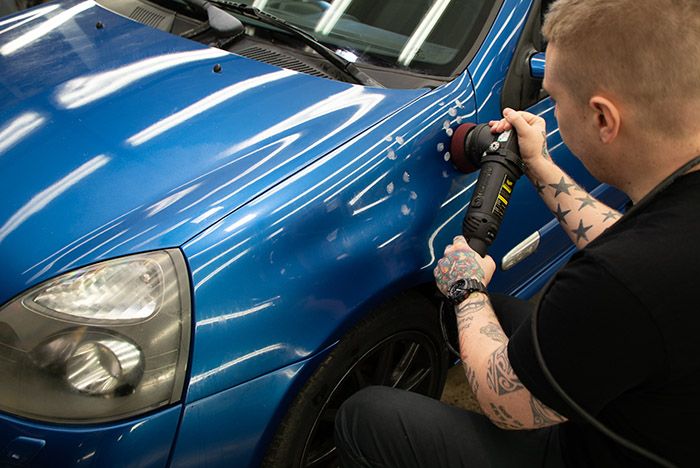Using car polish and wax are vital steps when detailing your car. Here, we’ll talk you through the differences between the two and how they work.
Let’s get the most common mistake out of the way. A car wax isn’t a car polish, they’re not the same thing. While there are polishes that are designated as ‘all-in-ones’, some of which contain a wax to leave a layer of protection behind as you polish, technically speaking they’re separate products used for different stages of detailing.
A polish (or a polishing compound) contains abrasive particles designed to physically remove defects. Essentially, they do this by taking away part of the top layer of your paintwork until the defect disappears. A wax – along with other protection layers such as paint sealants and ceramic coatings – is used purely for protection. Polishes can contain waxes, but waxes can’t contain polishes.
So, while waxes won’t correct defects in the surface underneath, they will protect the surface itself, (along with any work you’ve put into decontamination and polishing), from the elements. Polish for correction, wax for protection.

What is car polish and how does it work?
Car polish is a substance used to restore the shine and luster to the paint surface of a car. It works by removing minor imperfections, such as scratches, swirls, and oxidation, from the surface of the paint.
Car polish typically contains abrasive particles that help to remove these imperfections from the surface of the paint. When you apply car polish to a car’s surface, the abrasive particles work to buff away the damaged or oxidized paint. This reveals a smoother and shinier layer of paint underneath. The amount of abrasiveness in the polish determines how deeply it can penetrate the surface of the paint and how much damage it can remove.
Different types of car polish have different levels of abrasiveness, which are measured in “grits.” Finer-grit polishes are better for removing minor imperfections, while coarser-grit polishes are better for more significant scratches and defects.
It’s important to note that car polish should be used carefully, as overuse or improper use can actually damage the paint surface. It’s always a good idea to follow the instructions on the polish product carefully and test it on a small, inconspicuous area of the car before using it on the entire surface.
Check out our guide to the best car polish in 2023.

What is a car wax made of?
Technically speaking, to qualify as a wax the product must have a natural wax content. Man-made synthetic products – even if they’re called a wax by the manufacturer – are scientifically denoted as paint sealants. Ceramic coatings are slightly different because they’re based on silica, otherwise known as silicon dioxide (Si02), which is the main ingredient in glass. Unlike waxes and sealants these are designed for the most durable chemical bonding, which is why they’re not always easy to apply.
The best quality car waxes use natural carnauba wax to create the protection layer, and the rest is made up of a blend of various oils and solvents used to ease application. Despite what you may see on the tin or bottle, there’s no such thing as a ‘100% carnauba’ car wax. Natural carnauba is as hard as concrete, so you wouldn’t be able to physically apply it. In these cases, the manufacturer is referring specifically to the natural wax content of their product, and the fact that this part of the blend is carnauba, rather than cheaper natural waxes such as beeswax or montan. On average hard waxes contain 30-40% carnauba, with some high-end waxes offering even more.
The amount of natural wax in the blend is important in terms of durability, and most often the price. It is the expansive bit, after all. It’s also the part that installs the warm glow associated with top-end paint protection. Sealants and coatings don’t contain a natural element, and they’re engineered to be perfectly clear. While these offer shiny, long-lasting protection, these can often look a little sterile. Waxes however, contain trace impurities which slightly bend the light bouncing off them. And it’s these that create the warmth we all associate with show winning paintwork.

How do car waxes offer protection?
Wax physically bonds to the surface of your paintwork to create a physical barrier to the elements. This thin, smooth layer is not only impermeable to water molecules and larger grime particles but it gives them nothing to physically hold onto. This is the reason why dirt doesn’t stick, and why moisture beads or simply runs off the surface. This non-stick surface also make your car far easier to clean the next time you wash.
Because a wax physically bonds – and by that we mean that the layer holds on to the surface rather than by chemical reaction – it can be easier to remove with friction or harsh chemicals, than with a ceramic coating. But, even so, high-end hard waxes can offer durability for anything from 3 to 8 months.
The bonding process is also the reason why the surface has to be perfectly clean before you apply your wax. Any dirt or oils on the surface will be locked in, an in the worst case stop the bonding altogether. Suffice to say that this doesn’t do anything for looks, and it’s even worse for longevity.
Relevant content:







